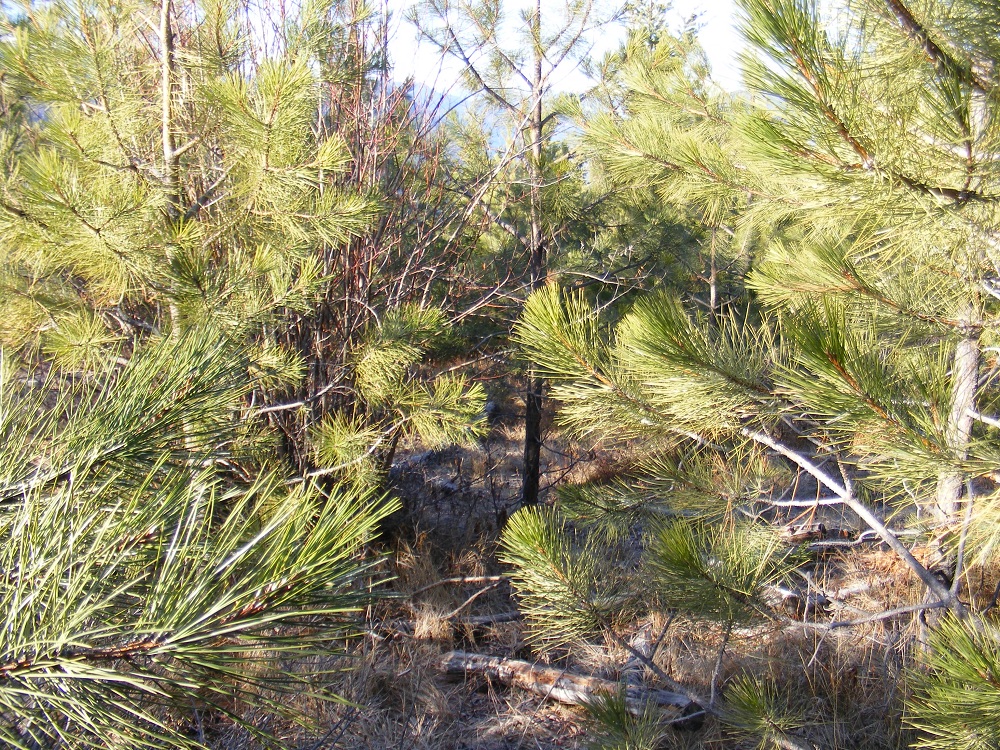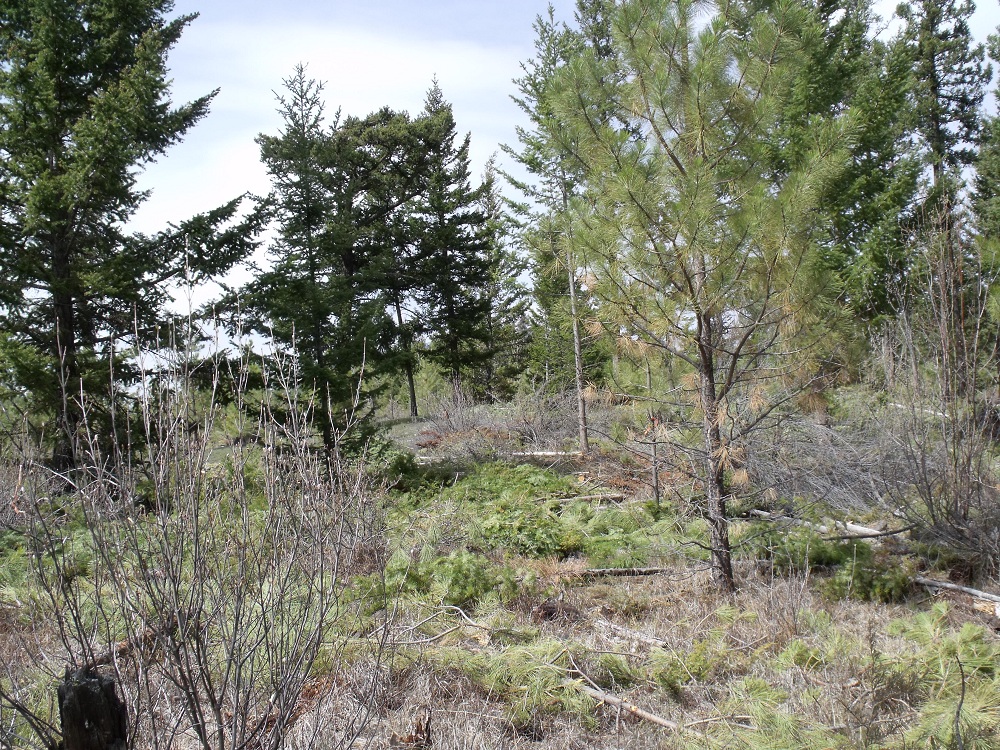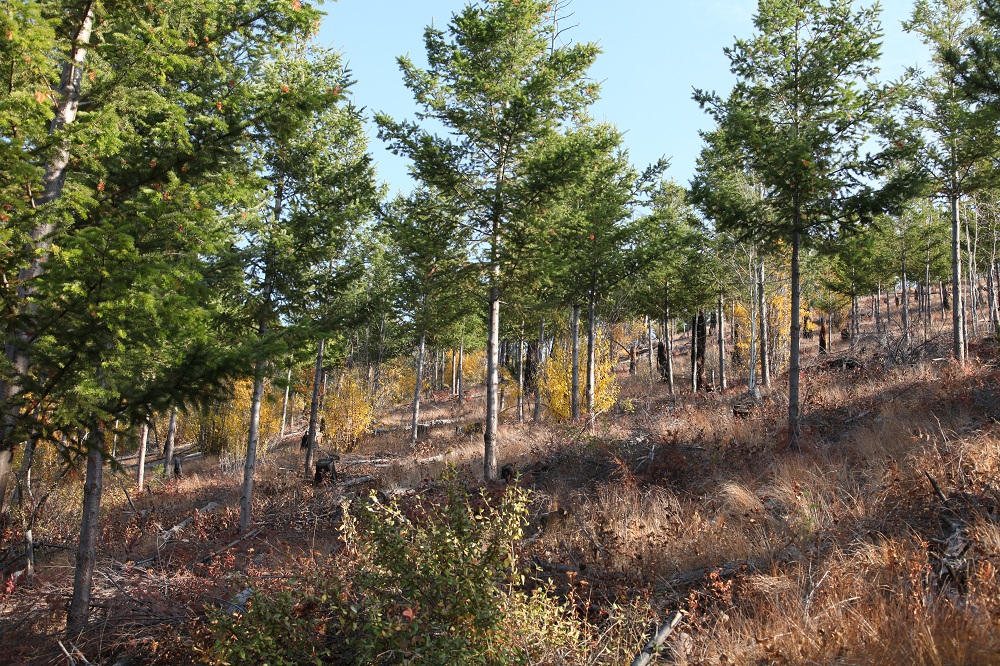The Plantation
The Plantation is the first restoration area that XCFC completed. The Plantation is a 16 hectare clearcut that was logged, burned, and replanted in the 1980s by a non-Xaxli’p company. This restoration area was selected by Elders and other Xaxli’p community members through a number of community discussions about restoration priorities. The main focus of the restoration work is improving the health and vigor of an important cultural resource, xusum (Shepherdia canadensis). Other objectives include restoring a diversity of plant species, and restoring a forest structure of patches and openings. Xusum is plentiful in the Plantation, especially on the lower slopes. However, as the thick young forest grows, it slowly fills the growing space, leaving little sunlight, water, and nutrients for the xusum.
Xusum grows best in sites with some moisture and partial to full sunlight. In order to create this type of habitat for xusum, we cut down young trees that were shadowing the xusum. This allows more sunlight to reach the plants, and increases the amount of water flowing through the site. Approximately 65% of the trees were cut, leaving an average of 400 stems per hectare on the site. Trees were left standing beside stumps and decomposing logs. Aspen and other deciduous trees were left standing to maintain diversity in the tree species. The slash was lopped and scattered to bring the slash as close to the ground as possible. Finally, the trees were pruned to reduce ladder fuels and improve timber quality.
Eco-cultural Restoration Prescription
In 2008, the forest crew carried out a survey of the Plantation to determine what the forest would have looked like before it was logged and replanted. Their data shows that the forest was made up of widely spaced old-growth trees, with a density of 250-450 stems per hectare. The trees grew in clumps, and there were scattered forest openings containing xusum and other understory plants. In moist areas, there were scattered aspen and cottonwood.
After the area was logged, Douglas fir and ponderosa pine were planted to a density of approximately 1450 stems per hectare. The planting tripled the normal density of the forest, and the understory shrubs and plants were starting to get overgrown by the young trees.
In order to restore the health of the xusum, and increase the diversity of plant species, we designed four restoration treatment types that removed a portion of the planted trees. The treatment types were thinned to a density of 200, 300, 500, or 600 stems per hectare. Creating a variety of treatment types allows us to observe over time the ecological benefits and disadvantages of each treatment type. In addition to the density guidelines, the restoration prescriptions included the following treatment specifications:
- Thin trees around the xusum to allow full or partial sunlight to each xusum bush
- Leave natural regeneration wherever possible
- Leave trees standing along fallen trees and beside stumps
- Leave the healthiest, largest trees and cut the small, unhealthy trees
- Leave a diversity of tree species
- Do not cut any aspen, cottonwood, spruce, or willow
- Leave trees in a pattern of clumps and opening
- Leave all of the large, old trees that weren’t cut during the logging in the 1980s.
- Lop and scatter the slash to get it as close the ground as possible
- Prune trees to 2 meters high or half of the tree height.



